
8 minute read
STEEPED IN HISTORY The fascinating

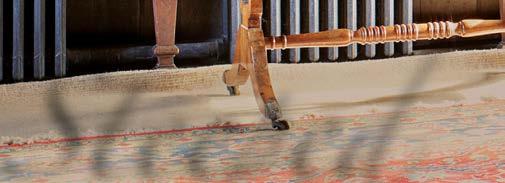
Steeped IN HISTORY


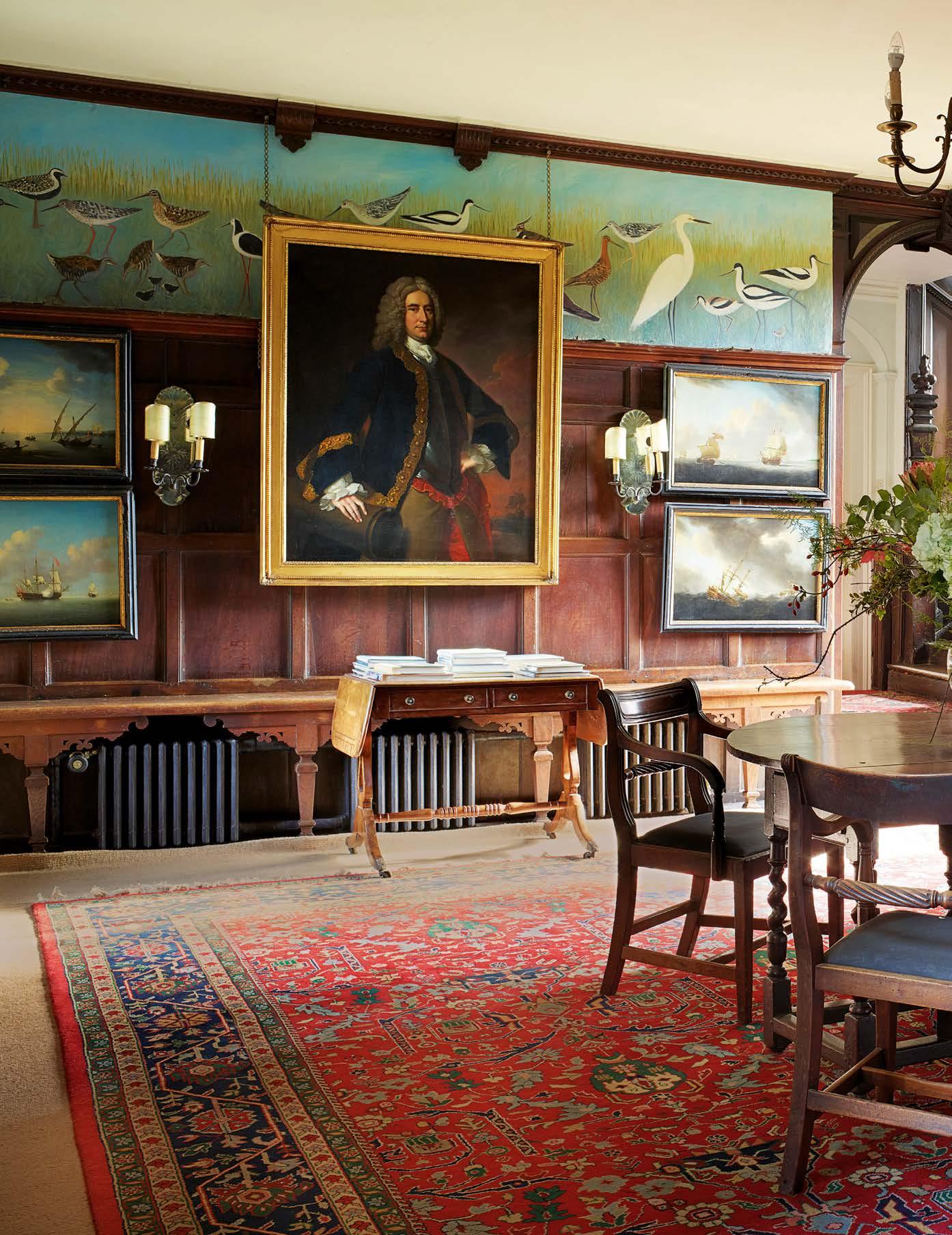
Historic Wiveton Hall has been in the same family for three generations and current owner Desmond MacCarthy is devoted to preserving it for many more years to come
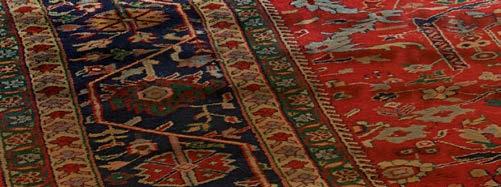
FEATURE ANNA TOBIN PHOTOGRAPHY RACHAEL SMITH STYLING ANNA TOBIN AND FIONA DE LYS
In what would have been the entrance hall, but now serves as the dining room, Jacobean wooden panelling covers the walls and a frieze by local designer Annabel Grey adds a ring of colour above. The large gilt-framed portrait is of one of Desmond’s relatives.
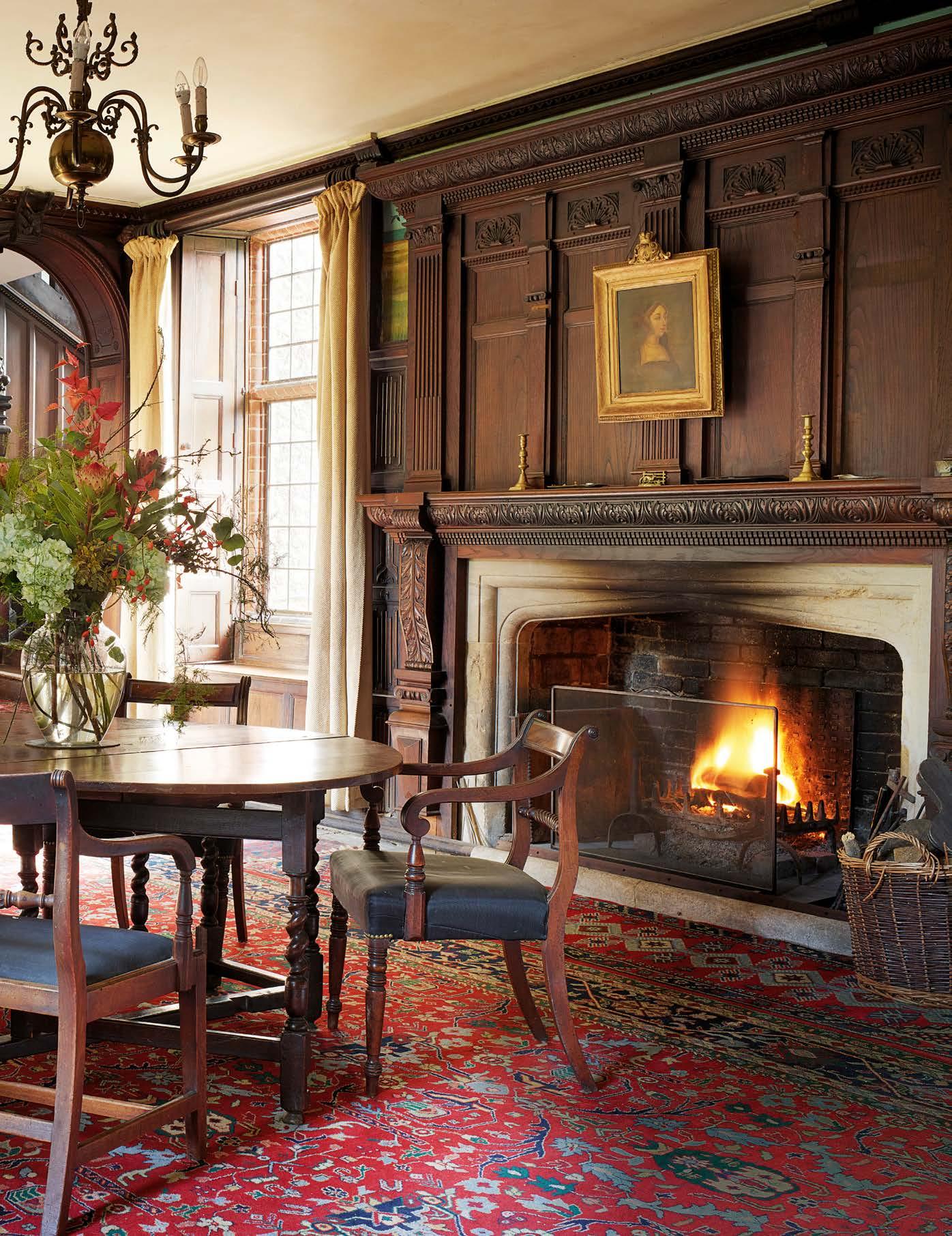
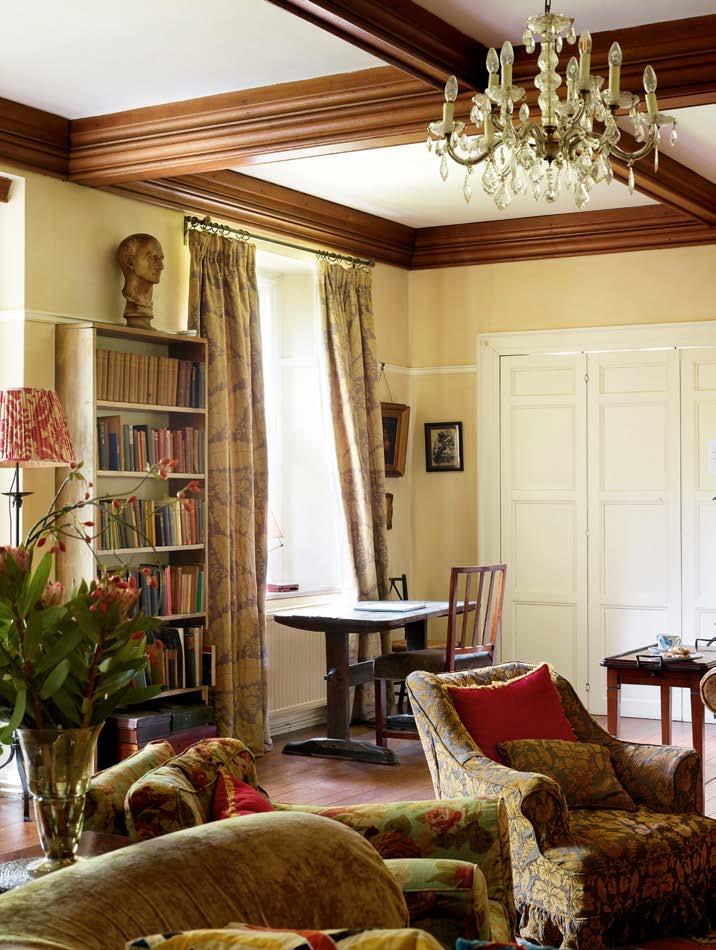
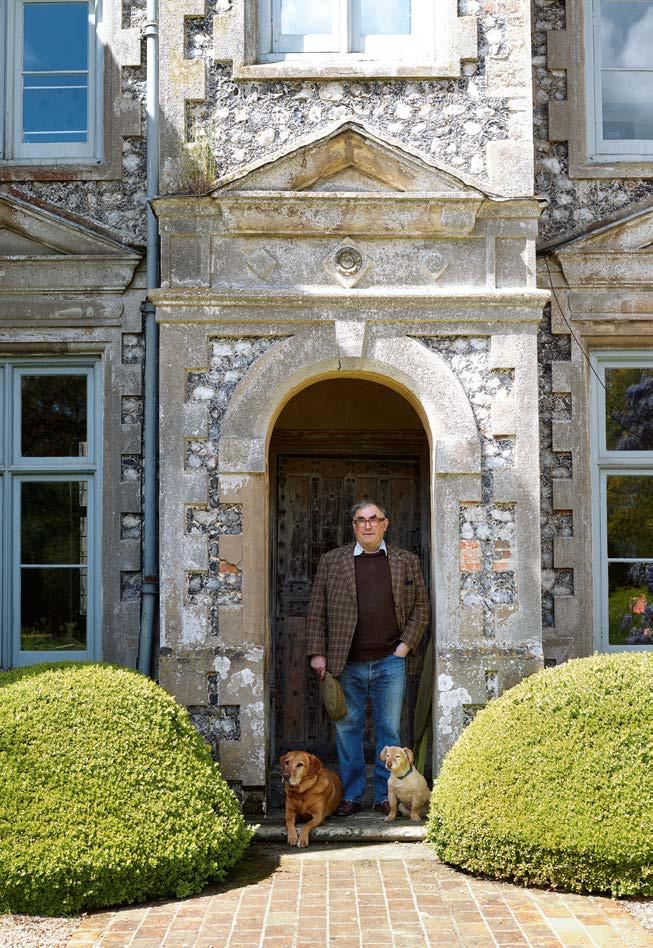
ABOVE The painted panelled doors in the drawing room open up into the kitchen and morning room, which were once the billiard room. ABOVE RIGHT Desmond with Rowley and Teddy, the family dogs. C arved into the front door of Grade II* listed Wiveton Hall in Norfolk is the date 1652, revealing to visitors the remarkable age of the oldest part of the Dutch-gabled, flint-faced property. The house was originally built by a merchant, John Gifford, who traded between the Norfolk coast and The Netherlands – explaining the Dutch influence in its architecture. Perhaps its most notable inhabitant has been Herbert Ward, famous for having accompanied Sir Henry Morton Stanley on his expeditions to Africa in the late nineteenth century.
Current owner, Desmond MacCarthy, has lived in the house, which looks out over the salt marshes to the North Norfolk coast, all his life. “My grandparents bought the house and the surrounding farmland in 1944,” he explains. “My mother grew up here, and when she married, she and my father moved into the West Wing, which was added by the architect Sir Guy Dawber in 1907. That’s where I spent my childhood.” Desmond took possession of the whole house when he started a family. He also took over the running of the farm and found that keeping the house and surrounding land in good profitable shape was more than a full-time job.
To the visitor, the house and its gardens presents an idyllic picture of rural bliss. Inside, a beautiful combination of interesting furniture, artwork, books and artefacts that Desmond has inherited or collected over the decades is set against a backdrop of beautiful architectural features. Surrounding the Jacobean-style manor house is a glorious patchwork of gardens and farmland, roamed by Wiveton’s resident flocks of guinea fowl and hens, along with gun dog Rowley and his little sidekick Teddy.
“Keeping Wiveton Hall in good condition is a challenge,” says Desmond. “We did used to get grants
By filling it with furniture and art and dividing it up into more intimate seating areas, Desmond ensures that the drawing room, which was once the ballroom, manages to feel cosy.

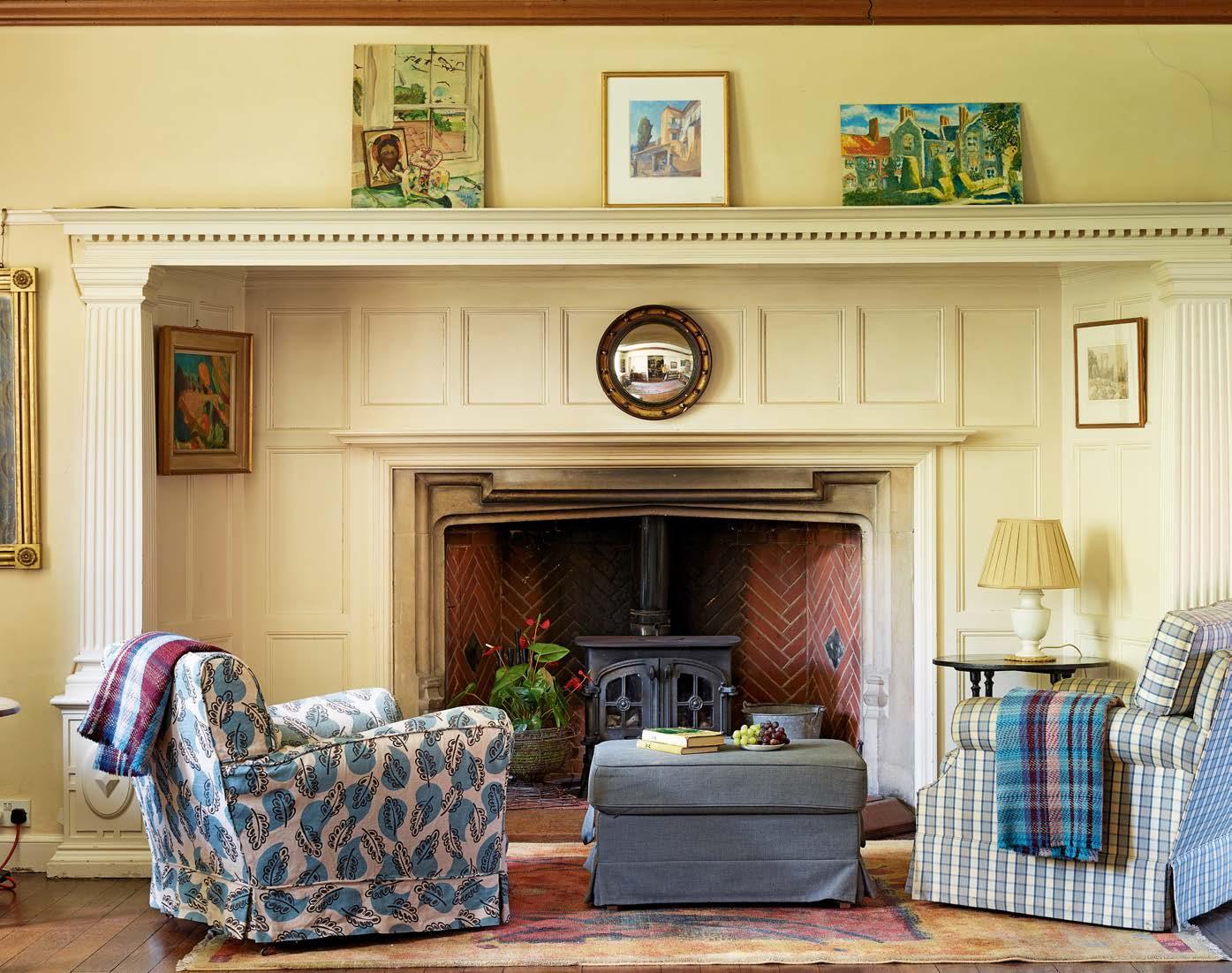
ABOVE The West Wing was added in 1907 and this room was then the billiards room, but is now the kitchen and morning room. RIGHT Surrounded by quintessentially English gardens, Wiveton Hall is a mix of decorative Jacobean and Dutch renaissance architecture. To visit the gardens, cafe or shop at Wiveton Hall or book a stay in the West Wing or the cottages in its grounds, visit wiveton-hall.co.uk
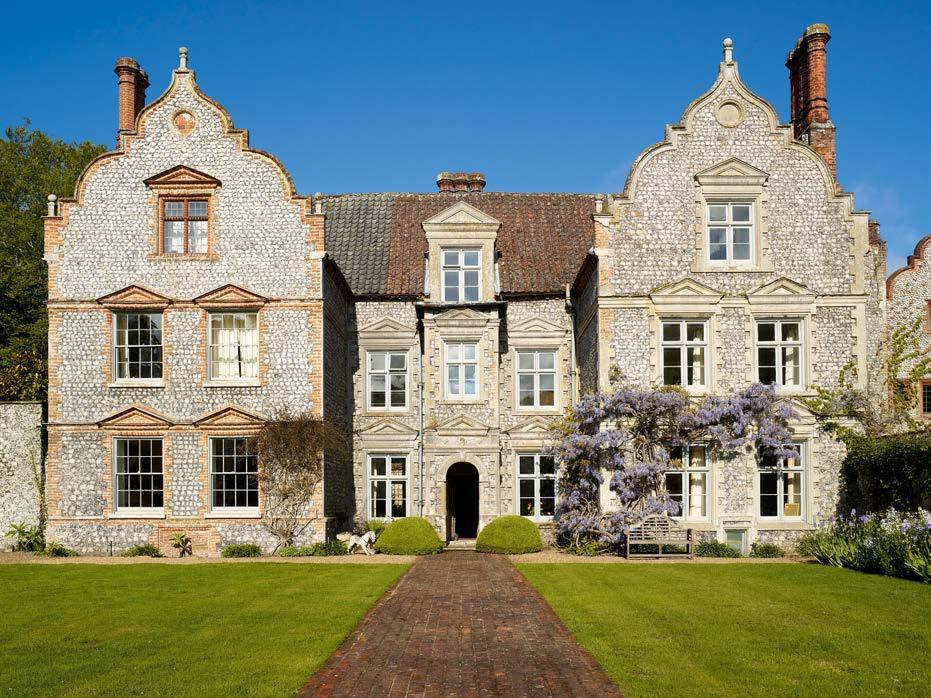
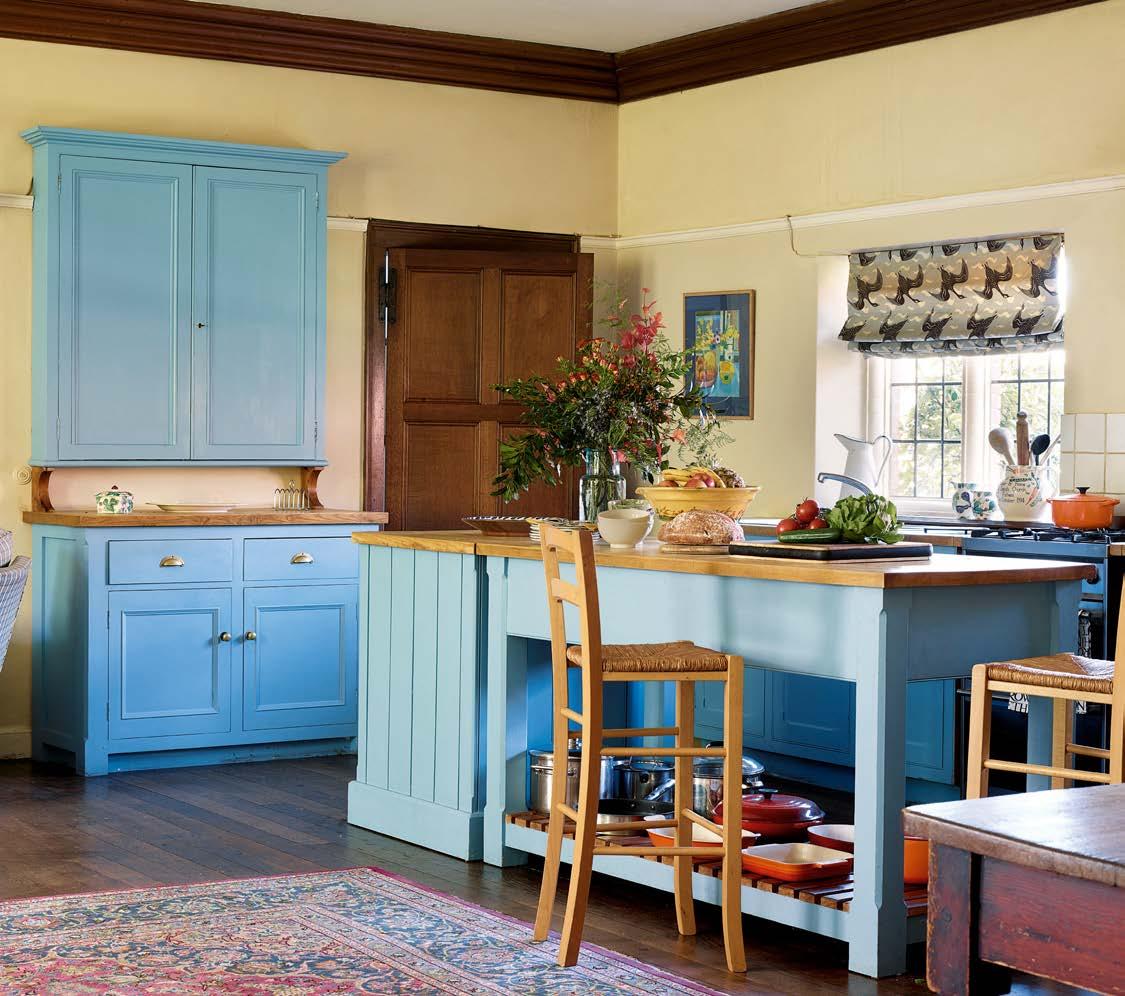
to help cover some of the conservation work, but it’s very hard to get them now. When you’re living and working in a very old house, you never get to the end of the maintenance list; there is always something that needs attention. Right now it’s the windows that need repainting. They’re all going to be done in a natural linseed oil-based paint, because it easily adapts to the structure of the wood, letting it breathe. It’s neverending, but I do get a lot of pleasure from keeping the house and the gardens in great shape.”
Desmond still farms the land and, to help with the running costs of the house, has also added a cafe and a shop, whilst the cottages that used to house farm workers have now been turned into holidays lets. The Edwardian-era West Wing, where Desmond and his sister Mary were brought up, is also available as a self-contained holiday let.
The house and the cottages have been cleverly designed with help from local interior and fabric designer Annabel Grey so that they all feel as one. Walls are covered in delicately patterned wallpapers and brightly coloured paints. Windows are draped in soft, floral, draught-excluding fabrics and floors are hidden by a patchwork of traditional rugs, with Desmond’s extensive art and antique collection bringing everything all together.
As he wanders through the rooms, it is obvious how much joy Desmond gets from explaining the origins of each painting and antique. In the Jacobean panelled dining room, which is ringed by a colourful frieze of
ABOVE There is plenty of room to cook for a crowd in the colourful kitchen. The units were made by a local carpenter and the kitchen worktops were fashioned from an ash tree that was felled in the grounds of Wiveton. Flowers here and elsewhere in the house by Fiona de Lys.
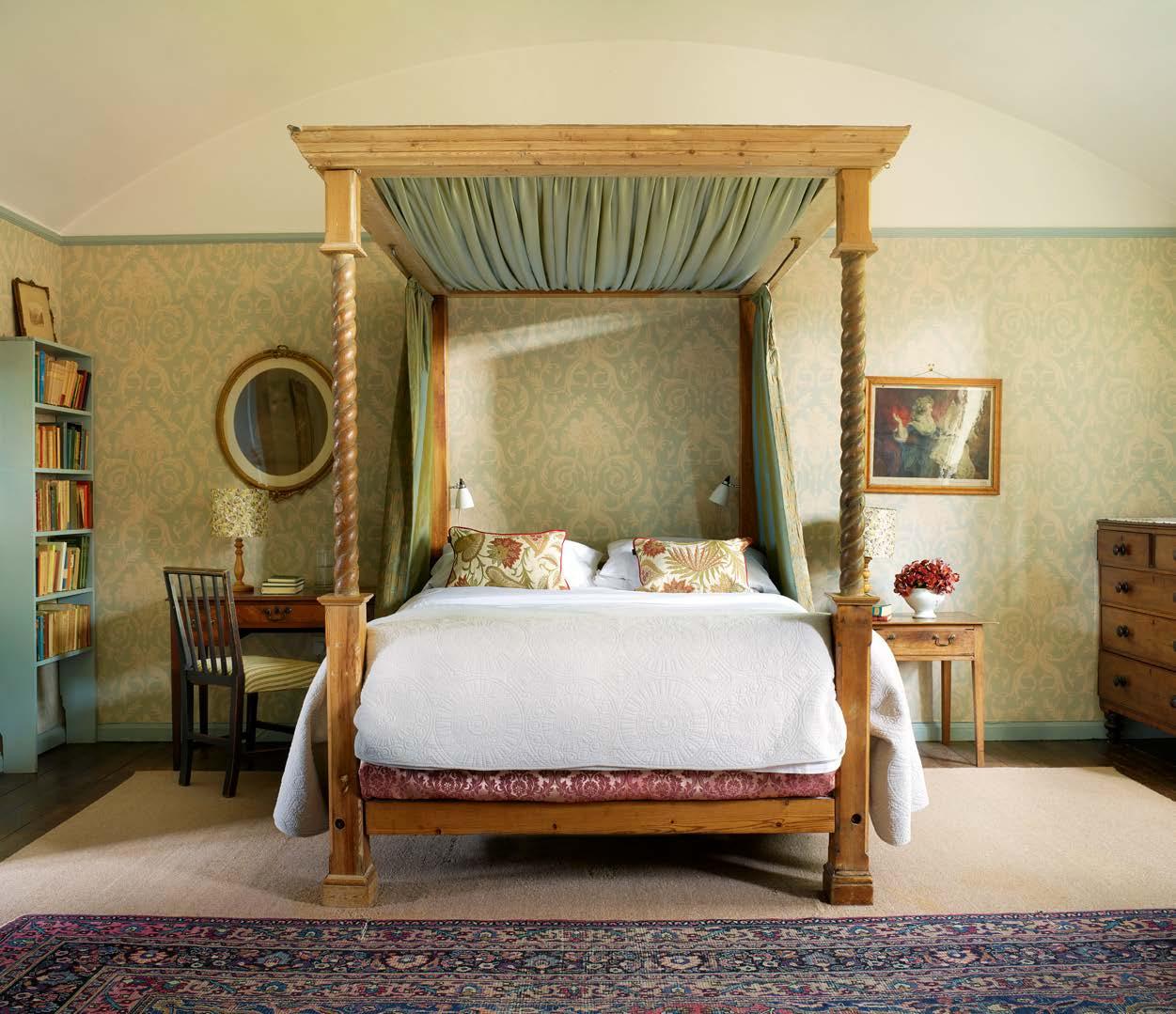
ABOVE The antique four-poster bed sitting under the barrel-vaulted ceiling is the focal point in the master bedroom. The bedside lamp shades are by Ruby Charlotte and the silver birch carafe and glass tumbler are by Emma Britton. The cushions are made from Etienne Cinnabar fabric from Iliv’s Silk Road collection. RIGHT The arched detail on the dressing-table mirror echoes the barrelvaulted ceiling above. While the floor-length curtains emphasise the room’s height. wading birds painted by Annabel Grey, Desmond points at the Regency sofa and says: “My father bought that for seven pounds at a farm auction. When he got it home he scraped off the paint and discovered the original gilt underneath, and then refurbished it. There is probably a pair to it somewhere!”
Walking through into the large formal drawing room, Desmond explains that in the house’s Edwardian heyday this room was the ballroom. “We’ve got an old floorplan of the house hanging in one of the rooms, which explains what each room was designed for,” he says. “This was the ballroom, where all the shooting parties would end up. It’s still a lovely room for parties and opens up into what was the billiard room, now the kitchen.” He nods at a bust on a bookshelf and mentions that it is by the sculptor Kathleen Scott, who also happened to be married to the explorer Scott of the Antarctic.
“On the other side of the house, there is a series of smaller rooms, one was for boots and sharpening knives, and there was even a pastry store,” reveals
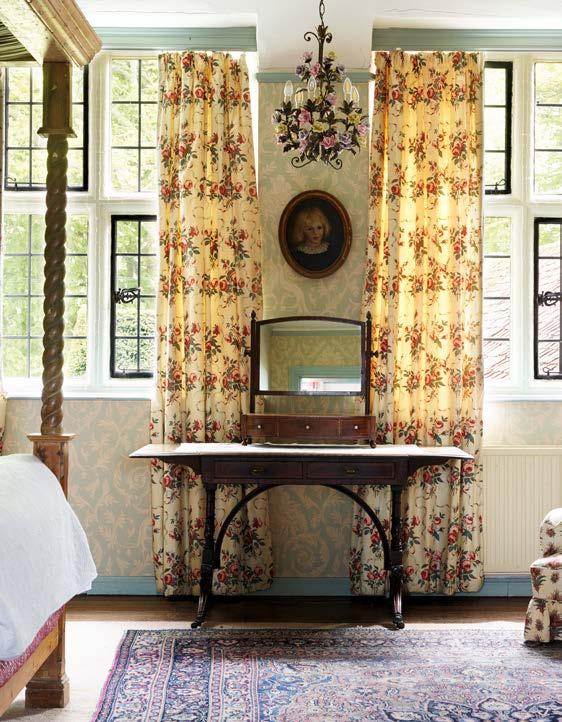

The baby blue picture rail and skirting board frames the wallpaper. The mirrored corner cabinet once belonged to Oscar Wilde and was inherited by a relative of Desmond’s who was connected to the Bloomsbury Group.

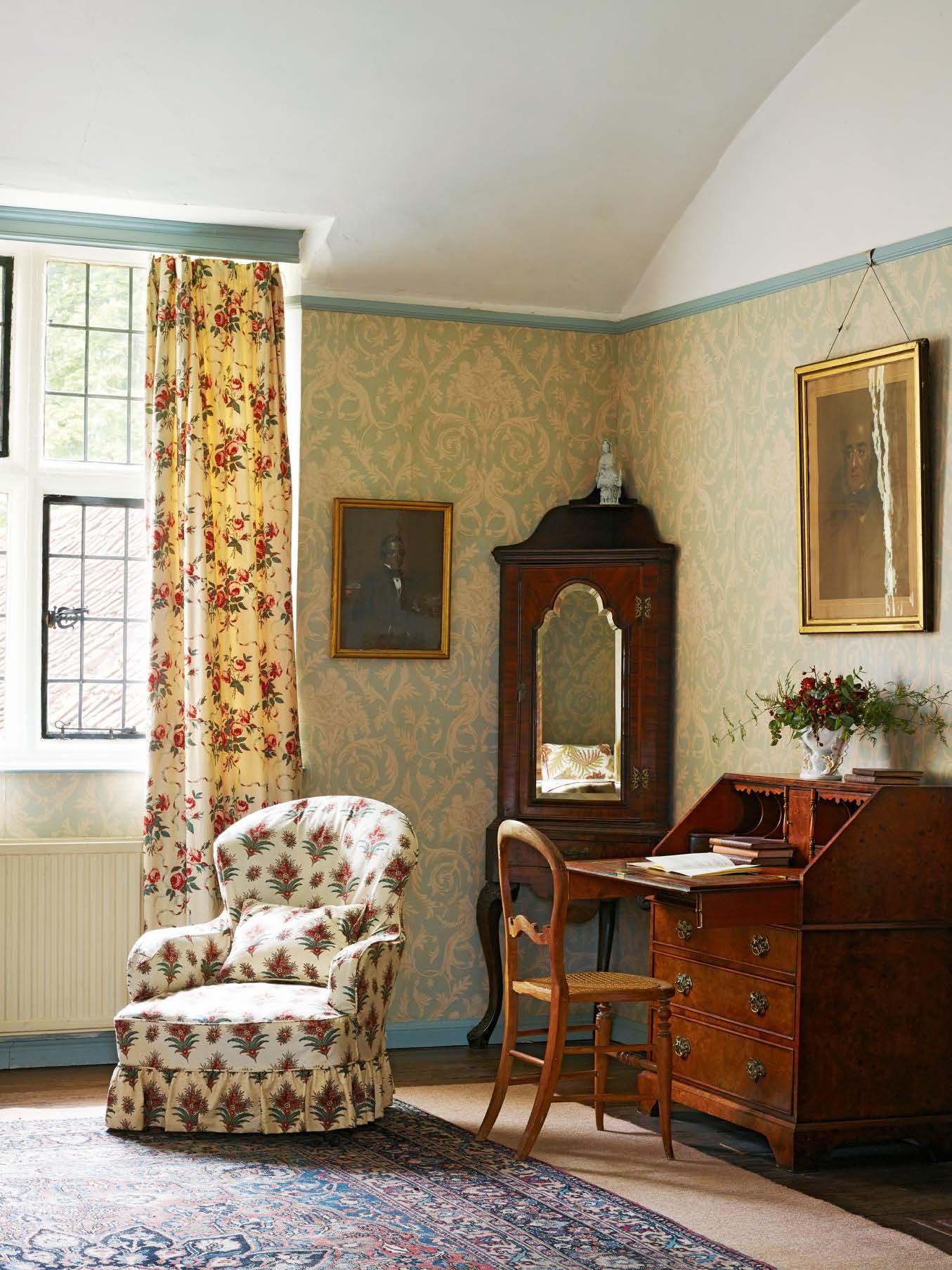
The painting alongside the bed in this guest bedroom is by Bloomsbury Group artist Roger Fry. The bedside lampshade is by Ruby Charlotte.
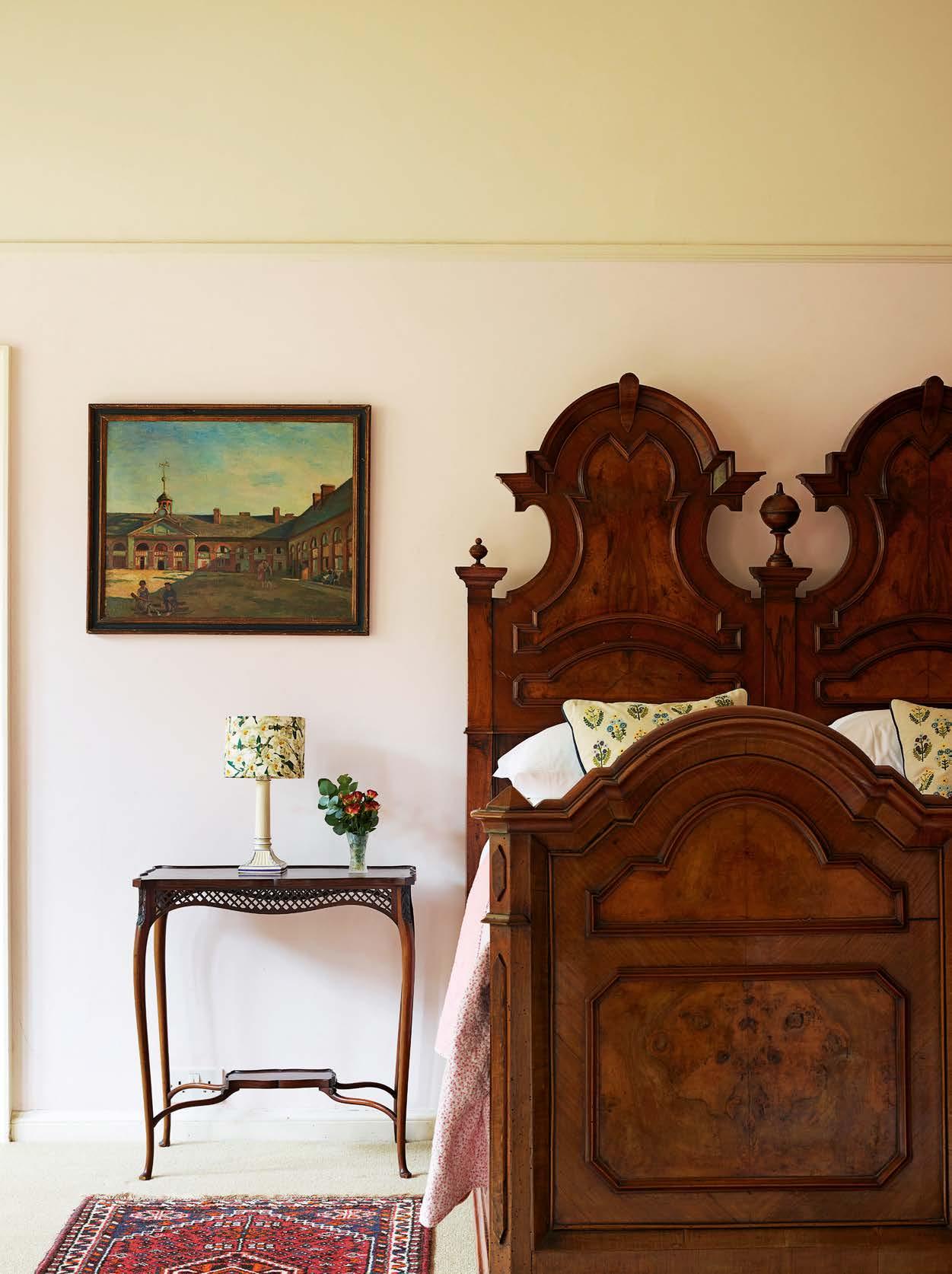

Desmond. The estate continues to live on in the house too, with the kitchen worktops crafted from an ash tree grown in the grounds. Local wood is most likely the source of the three beautifully carved staircases that take you to the upper floors too. Here, antique bedsteads and four-poster beds are the focal point of most of the bedrooms, each of which look out over the beautifully maintained gardens.
The interior and exterior of Wiveton Hall may feel very familiar to many because it was the setting for the BBC reality series Normal for Norfolk, of which Desmond was the star. “I did the TV show really to inform people who have an urban perspective of life about the pleasures of country living. I wanted to show how important it is to protect rural life and how hard it is to run a country estate and farm. Some people would turn this place into a hotel or a well-being centre, but I want it to remain as a family home and I’ve worked hard to keep it that way.” n
ABOVE A vintage-style cowboy wallpaper by Cath Kidston gives this children’s bedroom a timeless welcoming feel. The green desk in the corner was created by painter and author John Verney and includes views of King’s Lynn. RIGHT Two matching vintage fitted bedspreads from Fiona de Lys Floristry and Antiques complement the Austrian headboards in this guest bedroom. The painting is a family portrait from the 1920s.











